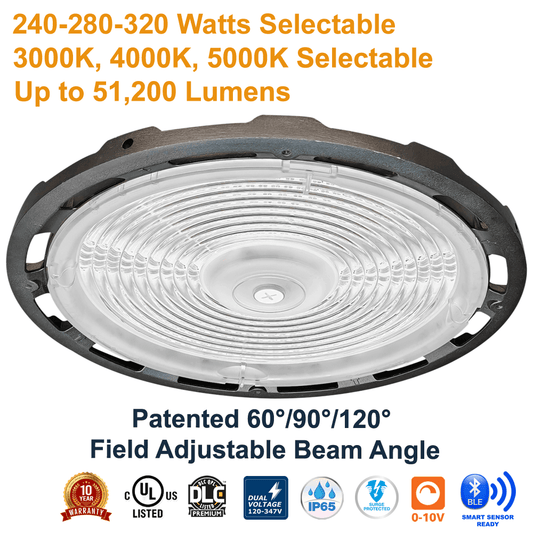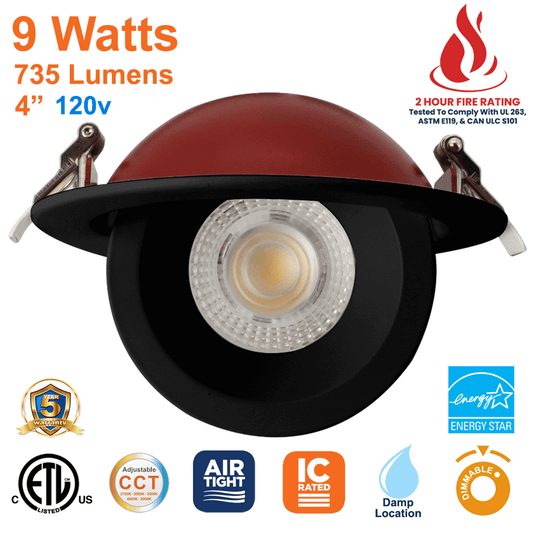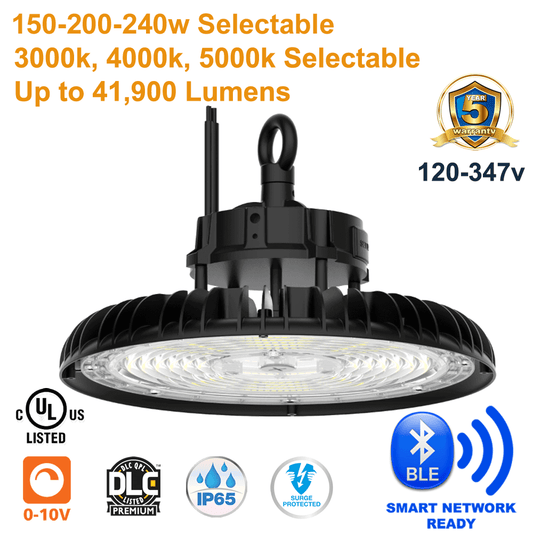Introduction:
In today's interconnected world, wireless communication technologies have become the backbone of numerous applications, from smartphones to smart home devices to speakers, and on and on it goes. Among these technologies, Bluetooth has emerged as the standard for short-range wireless communication. However, the evolution of Bluetooth has led to the development of Bluetooth Low Energy (BLE), a game-changing advancement that has revolutionized the way we wirelessly control and manage Networked Lighting Systems. In this blog post, we will explore the differences between Bluetooth Low Energy and original Bluetooth and dive into how BLE is utilized in Networked Lighting Controls (NLCs) to unleash a new era of efficiency and convenience.
Section 1: Bluetooth Classic vs. Bluetooth Low Energy
The technology that allows wireless communication between devices has been around for several years. However, the introduction of Bluetooth Low Energy (BLE) has created a shift in the wireless connectivity landscape. BLE was specifically designed to consume significantly less power than its predecessor, making it ideal for a wide range of applications where energy efficiency is paramount.
Unlike traditional Bluetooth, which focuses on transferring large amounts of data quickly, BLE excels in transmitting small bursts of data intermittently. This power-saving approach allows BLE devices to operate for extended periods using very little energy. Additionally, BLE introduced the concept of "advertising" and "scanning," enabling devices to efficiently discover and connect with each other without the need for a dedicated connection.
Section 2: Exploring Bluetooth Low Energy
Bluetooth Low Energy operates on the same 2.4 GHz frequency band as Classic Bluetooth, but it employs a different modulation scheme to achieve lower power consumption. BLE devices are classified into two categories: peripheral devices and central devices. Peripheral devices, such as sensors and wearables, collect and transmit data, while central devices, like smartphones or gateways, receive and process the data.
BLE introduced the concept of profiles, which define how devices communicate with each other and enable interoperability between different manufacturers. Standard profiles, such as the Generic Attribute Profile (GATT) and the Generic Access Profile (GAP), provide a framework for building BLE-enabled applications.
Section 3: The Rise of Bluetooth Mesh
To overcome the limited range of individual BLE devices and facilitate communication over a larger area, Bluetooth Mesh was introduced. Bluetooth Mesh extends the capabilities of BLE by creating a network of interconnected devices, forming a reliable and scalable communication infrastructure. This network topology enables devices to relay messages, extending the coverage range without requiring direct connections to the central device.
With Bluetooth Mesh, NLCs can be easily implemented in large-scale installations, such as commercial buildings or outdoor spaces. The ability to connect hundreds or even thousands of devices in a mesh network offers unparalleled flexibility and control, allowing lighting systems to be precisely managed and monitored.

Section 4: BLE and Networked Lighting Controls
Networked Lighting Controls bring intelligence and efficiency to lighting systems, allowing for personalized lighting experiences, energy optimization, and simplified maintenance. Bluetooth Low Energy, combined with Bluetooth Mesh, has emerged as a leading solution in this domain, transforming the way we light workspaces.
Using BLE in NLCs delivers numerous benefits. First and foremost, BLE enables wireless connectivity between lighting fixtures and control devices, eliminating the need for complex wiring. This flexibility allows lighting systems to be easily reconfigured or expanded without extensive installation efforts.
Section 5: Advanced Functionality with BLE
Bluetooth Low Energy introduces a range of advanced functionality to NLCs. For instance, BLE-enabled lighting fixtures can incorporate occupancy sensors, detecting the presence of occupants in a room and adjusting the lighting accordingly. Sensors can also detect natural light levels and lower a light fixture’s output to account for this. Features, such as these, not only enhance user comfort but also lead to substantial energy savings by ensuring lights are only active when needed.
Because BLE transmits small packets of data at low power it enables real-time communication and control. NLCs can be seamlessly integrated with mobile applications, allowing users to adjust brightness, color temperature, and other parameters using their smartphones, tablets, and wireless switches.
Section 6: Ease of Installation and Scalability
One of the significant advantages of BLE-based NLCs is the ease of installation and scalability. With traditional wired systems, extensive cabling and infrastructure modifications are often required. In contrast, BLE eliminates these complexities, as the lighting fixtures can be wirelessly programmed, using an app, and don’t require a central control device or gateway to operate.
Scalability is another key factor. BLE's mesh networking capability allows the addition of new devices to the network without affecting the existing infrastructure. This makes it a cost-effective solution for retrofitting existing buildings or expanding lighting systems in large-scale deployments.

Section 7: Enhanced Energy Efficiency
Efficient energy management is a critical aspect of modern lighting systems. Bluetooth Low Energy offers significant energy-saving opportunities in Networked Lighting Controls. The low power consumption of BLE devices, coupled with the ability to collect and analyze data in real-time, enables intelligent energy optimization strategies.
With BLE, lighting fixtures can be integrated with occupancy and daylight sensors, allowing the system to dynamically adjust lighting levels based on actual usage and natural lighting conditions. This fine-grained control optimizes energy consumption and reduces the overall carbon footprint of a facility.
Section 8: Simplified Maintenance and Monitoring
BLE powered Networked Lighting Controls simplify maintenance and monitoring tasks. Traditional lighting systems often require manual inspection and testing, making it challenging to identify and address issues promptly. BLE-enabled lighting controls enable remote monitoring and diagnostics, providing real-time insights into system performance, energy consumption, and potential faults.
Section 9: The Future of Networked Lighting Controls
Bluetooth Low Energy has opened new possibilities for Networked Lighting Controls, transforming our relationship with light and enabling intelligent environments. As technology continues to evolve, we can expect further advancements in BLE and its integration with other emerging technologies like the Internet of Things (IoT) and artificial intelligence (AI). These advancements will pave the way for smarter, more sustainable lighting systems that adapt to our needs and contribute to a greener future.
Conclusion:
Bluetooth Low Energy has revolutionized NLCs, offering a seamless and energy-efficient solution for managing lighting systems. The unique capabilities of BLE, combined with the scalability and flexibility of Bluetooth Mesh, had created unprecedented control, convenience, and energy optimization. As we look to the future, the potential applications of BLE in NLCs and beyond are vast, promising a world where intelligent, highly personalized lighting environments are just a click away.























